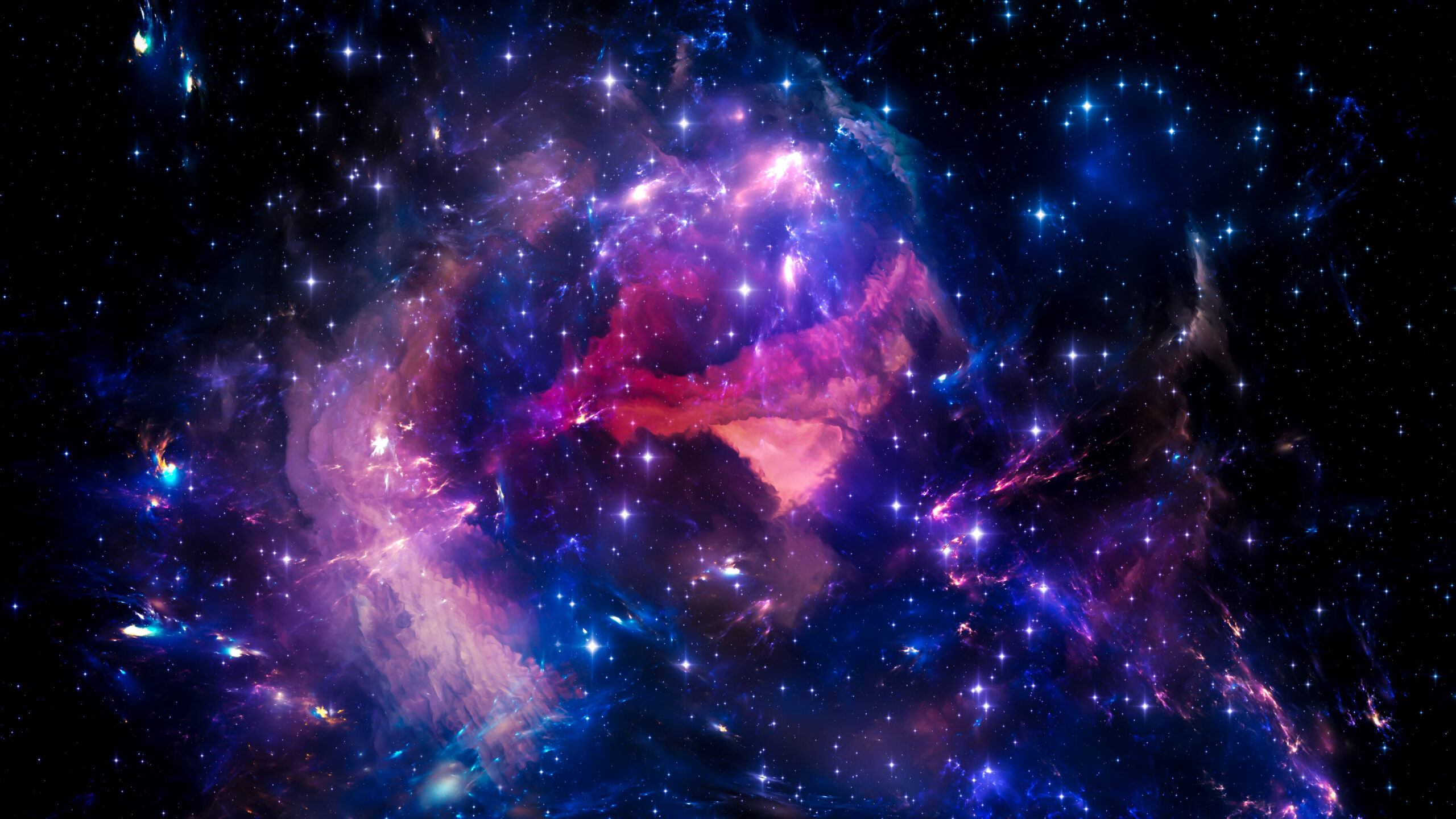
hlādinī-śakti [energy, ability, strength, effort, power that brings pleasure, bliss, happiness]
The Upaniśads tell us that the divine, the soul, the self (ātma) existed even before the universe. Cosmic creation took place when that divine substance expanded into matter in order to create all existing things. The vehicle for that expansion—which is still going on everywhere and at every moment—is energy (śakti).
Energy is not soul, but without energy the soul has no being, no life, no relation, no attraction, no longing, no desire, no zeal. In short: no love. Energy is not the divine itself; it is what brings the divine into being through potency of love.
From the earliest mention of Kṛṣṇa in the Vedas, he is described in terms of his energy. The very nature of the created universe is determined by the different kinds of energy he deploys. If Kṛṣṇa is present everywhere in the universe, he is present in different ways.
The Kṛṣṇa’s energy has three primary forms. First, Kṛṣṇa’s external or material energy (māyā-śakti) governs the material world. His marginal energy (jiva–śakti) governs the subtle world, those immaterial entities like mind, intelligence, or memory that are finite in time and space. And his internal or spiritual energy (antarańga–śakti) governs the soul of every living entity as part and parcel of God.
Kṛṣṇa’s spiritual energy is pure, divine energy. But even the splendour of the divine has a shape. Divine spiritual energy has three contours, three ways of expanding into the world: through the energy of existence (sandhinī-śakti), the energy of consciousness (samvit-śakti) and through the energy of pleasure (hlādinī-śakti). It is the latter that is the greatest.
If Kṛṣṇa’s energy powers everything in the universe, from making the planets turn about their axes, to making our hearts beat in our chests, then it is his pleasure-giving energy that powers our souls. If physical movement is the most common expression of Kṛṣṇa’s material energy, then feeling is the most crucial expression of his spiritual energy.
hlādinī-śakti is the crux of Lord Caitanya Mahāprabhu’s gift to the world. The Kṛṣṇa of the Vedas is the God of opulence and majesty, power and goodness, beauty and bliss. He is all perfection and therefore loved and revered. The drama of the rāsa dance tells the story of Kṛṣṇa’s endless lovability by the gopīs.
The rāsa-līlā enacts both the zeal of the gopīs’ adoration and the loneliness of Kṛṣṇa’s perfection. He is everything but lacks divine experience; he is knowledge but does not know divinely; he is bliss but cannot give divine pleasure, and he is all love, but cannot give love to God.
Thus when Lord Caitanya appears he embodies Kṛṣṇa’s greatest realisation: that loving—love lived, love felt, love desired, even love lost—is greater still than love. Living love is Rādhā. In Lord Caitanya, the beloved is united with the lover, Kṛṣṇa’s endless love is united with Rādhā’s endless energy of loving, her hlādinī-śakti.
If Kṛṣṇa is divine love, then Rādhā is divine loving. It is Rādhā who makes Kṛṣṇa the lover, releases him to love, gives him the energy of loving, and the pleasure of loving.
In the same way, through the gift of hlādinī-śakti Rādhā makes love flow through all souls, great and small, hard and soft, brash or timid. Where there is a soul, there is Rādhā, lighting the heart with the power of feelings, touching the heart-senses with the pleasure of love, lifting us to the purity of our own souls, just as she leads us to the divine in our own lives.